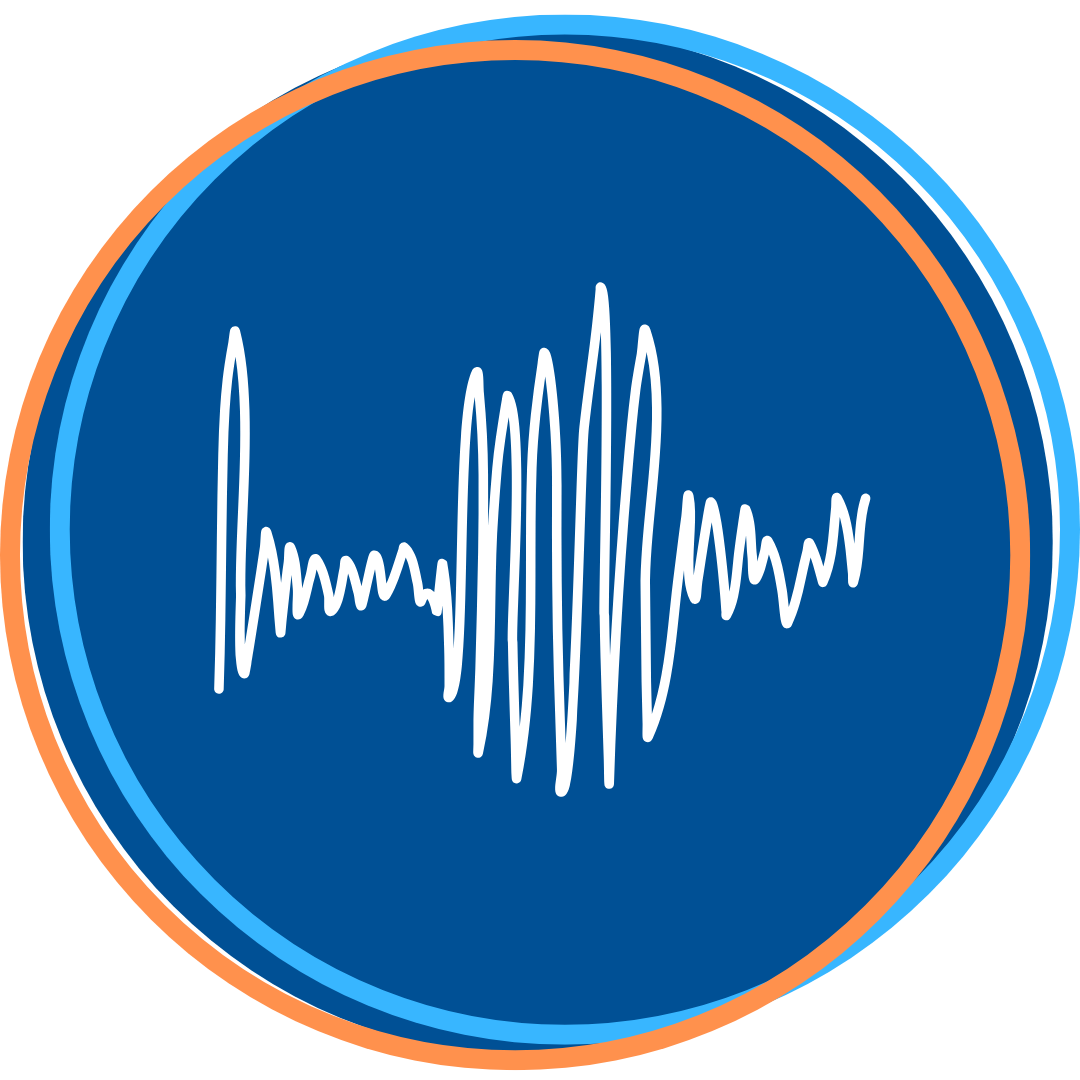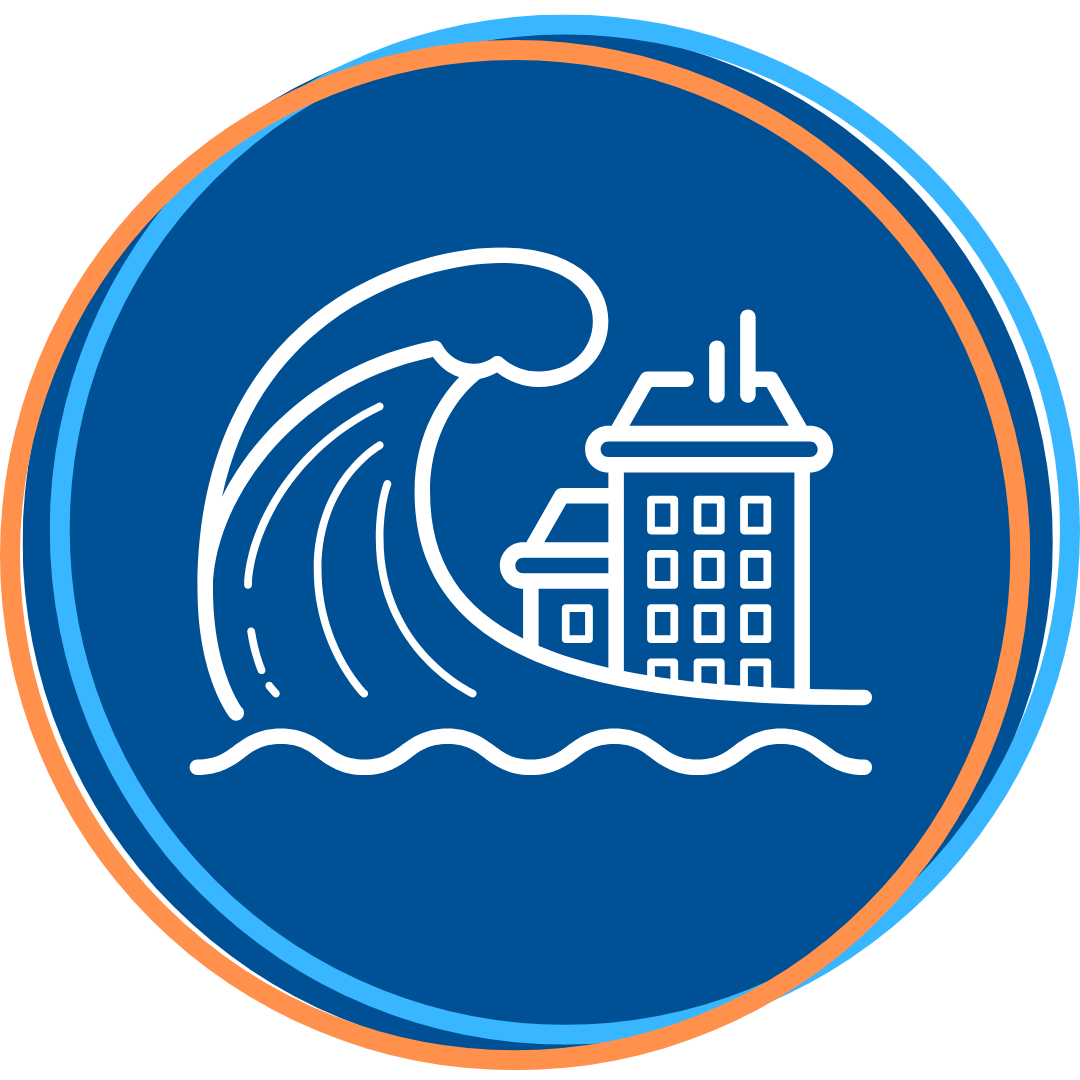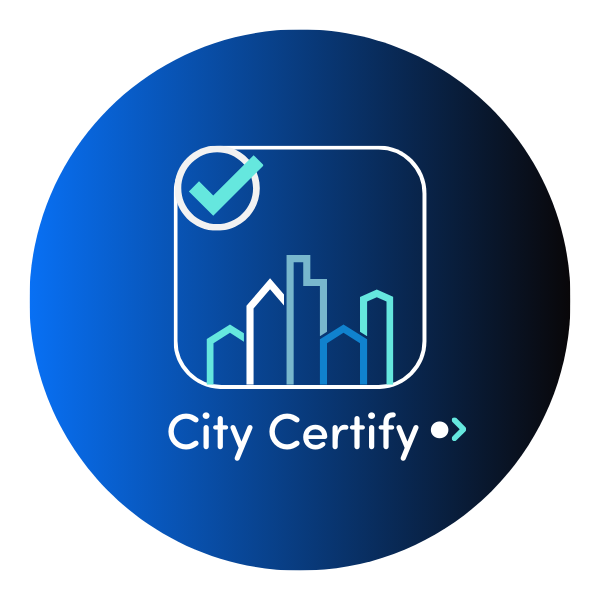
The earthquake phenomenon
An earthquake is a phenomenon that usually occurs without clear warning, cannot be prevented and, despite its short duration, can cause major material damage to human infrastructure, resulting in serious injuries and loss of life.
Greece ranks first in Europe in terms of seismicity and sixth in the world. Its geographical location coincides with an area of our planet where major geotectonic phenomena such as the convergence of the African and the Euro-Asian lithospheric plates take place, resulting in the high seismicity observed in this region.
The most serious earthquake event in Greece in the last hundred years is the 7.2R magnitude earthquake that occurred on 12 August 1953 in Kefalonia. It caused enormous material damage mainly in Kefalonia, Zakynthos and Ithaca, killing 476 people and injuring 2412 others. Out of a total of 33,000 houses on these islands at the time, there were 27,659 collapses, severe damage to 2,780 houses and minor damage to 2,394 houses.
The consequences
In addition to the direct effects, earthquakes have the consequence of triggering other geological phenomena such as soil liquefaction, rockfalls, landslides and marine gravity waves (tsunamis) with equally serious consequences. Marine gravity waves are caused by large submarine earthquakes. The most significant in terms of magnitude marine gravity wave observed in Greece in the last fifty years was generated on 9 July 1956 in the Amorgos sea area following a 7.5R earthquake.
The necessity of comparing an earthquake with another seismic event in another place and time, in terms of its characteristics as a natural phenomenon and its effects on the functioning of an organised society, necessitated the adoption of two different physical quantities, magnitude and intensity respectively.
The magnitude of an earthquake is expressed in degrees on the Richter scale and is the physical quantity used by seismologists to measure the seismic energy released at the point where the earthquake occurs.
The intensity of an earthquake is expressed empirically either in degrees on the revised Mercalli scale (MM) or in degrees on the Mercalli-Sieberg scale (MKS) and is the physical quantity that gives a measure of the effects of an earthquake on people and human structures.
The expected end result of seismic movement in one area (deaths, property damage, etc.) and the need to compare it with that in another area led scientists to adopt a quantity called seismic risk.
The seismic risk depends on the seismic hazard of the area and the vulnerability of the structures located in the area. The seismic hazard of an area is expressed in terms of a quantity whose measure is the expected intensity of seismic motion in that area, while the vulnerability of structures is expressed in terms of the properties of the structures (e.g. quality of construction, intrinsic hazard, local geotechnical conditions, etc.).
The General Secretariat of Civil Protection, based on Law 3013/2002, is responsible for dealing with all phases of preparation, mobilization and coordination of action of the competent civil protection agencies involved in the issues of dealing with earthquake risk in our country.
Physical characteristics
Each earthquake has its own identity defined by physical characteristics, induced phenomena and effects.
The physical characteristics of an earthquake are its size, location (epicentre) and time of occurrence, as well as the degree to which it was felt locally. The Geodynamic Institute of the National Observatory of Athens has a network of seismographs covering the whole of Greece and can provide reliable information on the size, epicentre and time of an earthquake. The Seismology Laboratories of the Universities of Athens, Thessaloniki and Patras and the Earthquake Planning and Protection Organisation have local seismograph networks that can reliably determine the above characteristics in the case of earthquakes located geographically within these networks.
- Στερεώστε γερά στους τοίχους τα ράφια και τις βιβλιοθήκες. Απομακρύνετε από τις πόρτες τα ψηλά έπιπλα που μπορούν να ανατραπούν και να εμποδίσουν την έξοδο.
- Βιδώστε καλά στους τοίχους το θερμοσίφωνα και τις δεξαμενές καυσίμων και νερού.
- Τοποθετείστε τα βαριά αντικείμενα στα χαμηλότερα ράφια.
- Απομακρύνετε τα βαριά αντικείμενα πάνω από κρεβάτια και καναπέδες.
- Στερεώστε καλά τα φωτιστικά σώματα και τους ανεμιστήρες οροφής.
- Προσδιορίστε καλά προφυλαγμένους χώρους σε κάθε δωμάτιο του σπιτιού:
- κάτω από ανθεκτικά γραφεία ή τραπέζια.
- μακριά από γυάλινες επιφάνειες και βιβλιοθήκες.
- μακριά από εξωτερικούς τοίχους.
- Ελέγξτε τη σωστή λειτουργία του δικτύου παροχής ηλεκτρικού ρεύματος και φυσικού αερίου.
- Ενημερώστε τα μέλη της οικογένειας για το πώς κλείνουν οι γενικοί διακόπτες ηλεκτρικού, νερού και φυσικού αερίου και για τα τηλέφωνα έκτακτης ανάγκης (112, 199, 166, 100 κλπ.)
- Προμηθευτείτε φορητό ραδιόφωνο με μπαταρίες, φακό και βαλιτσάκι πρώτων βοηθειών.
Έξω από το σπίτι
- Επιλέξτε ένα ασφαλή χώρο συνάντησης μετά το σεισμό ο οποίος να βρίσκεται:
- μακριά από κτίρια και δέντρα
- μακριά από τηλεφωνικά και ηλεκτρικά καλώδια.
Αν είστε μέσα στο σπίτι
- Διατηρείστε την ψυχραιμία σας.
- Καλυφθείτε κάτω από κάποιο ανθεκτικό έπιπλο (τραπέζι, γραφείο, θρανίο), γονατίστε και κρατήστε με τα χέρια σας το πόδι του.
- Αν δεν υπάρχει ανθεκτικό έπιπλο, γονατίστε στο μέσον του δωματίου, μειώνοντας όσο γίνεται το ύψος σας και προστατέψτε με τα χέρια το κεφάλι και τον αυχένα σας. Απομακρυνθείτε από μεγάλες γυάλινες επιφάνειες (παράθυρα, γυάλινα χωρίσματα) ή έπιπλα και αντικείμενα που μπορεί να σας τραυματίσουν.
- Μην προσπαθήσετε να απομακρυνθείτε από το σπίτι.
- Μην βγείτε στο μπαλκόνι.
Αν είστε σε ψηλό κτίριο
- Απομακρυνθείτε από τζάμια και εξωτερικούς τοίχους.
Αν είστε σε χώρο ψυχαγωγίας, εμπορικό κέντρο ή μεγάλο κατάστημα
- Διατηρείστε την ψυχραιμία σας.
- Μείνετε στο χώρο μέχρι να τελειώσει η δόνηση.
- Μην παρασυρθείτε από το πανικόβλητο πλήθος που κινείται άτακτα προς τις εξόδους γιατί κινδυνεύετε να ποδοπατηθείτε.
Αν βρίσκεστε σε ανοιχτό χώρο
- Απομακρυνθείτε από χώρους που βρίσκονται κάτω από κτίρια, τηλεφωνικά ή ηλεκτρικά καλώδια.
- Αν έχετε μαζί σας τσάντα ή χαρτοφύλακα, καλύψτε το κεφάλι σας με αυτά.
Αν βρίσκεστε μέσα στο αυτοκίνητο
- Καταφύγετε σε ανοιχτό χώρο και σταματήστε με προσοχή το αυτοκίνητο ώστε να μην εμποδίζει την κυκλοφορία.
- Αποφύγετε να περάσετε από σήραγγες, γέφυρες ή υπέργειες διαβάσεις.
Αν είστε μέσα στο σπίτι
- Προετοιμαστείτε για τυχόν μετασεισμούς.
- Ελέγξτε προσεκτικά τον εαυτό σας και τους γύρω σας για πιθανούς τραυματισμούς.
- Αν υπάρχουν βαριά τραυματισμένοι μην τους μετακινείτε.
- Εκκενώστε το κτίριο από το κλιμακοστάσιο (μην χρησιμοποιείτε τον ανελκυστήρα), αφού πρώτα κλείσετε τους διακόπτες του ηλεκτρικού ρεύματος, του φυσικού αερίου και του νερού.
- Καταφύγετε σε ανοιχτό και ασφαλή χώρο.
- Ακολουθείστε τις οδηγίες των Αρχών και μην δίνετε σημασία σε φημολογίες.
- Μην χρησιμοποιείτε άσκοπα το αυτοκίνητό σας ώστε να μην γίνετε εμπόδιο στο έργο των συνεργείων διάσωσης.
- Χρησιμοποιείστε το σταθερό ή κινητό τηλέφωνό σας σε εξαιρετικές περιπτώσεις, γιατί προκαλείται υπερφόρτωση των τηλεφωνικών δικτύων.
- Αποφύγετε να μπείτε στο σπίτι σας αν βλέπετε βλάβες, κομμένα καλώδια, διαρροή υγραερίου ή φυσικού αερίου.

How to react to an upcoming gravity wave (Tsunami)
If you are in a coastal area with low altitude
– Although not all earthquakes cause tsunamis, stay alert.
– Observe if there is a significant rise or fall in water levels,
which is a natural warning.
– Get away from the sea and head to inland areas
with higher altitude. A small tsunami at one point on the
coast can turn into a large tsunami miles away.
– Stay away from the coast. The tsunami is not just one
wave but a series of waves so only return after being informed
by the authorities that there is no danger.
– Do not approach the coast to watch an incoming tsunami.
When you see it, it may be too late to avoid it.

Public places after an earthquake
Shelters (or gathering or assembly areas) are open free spaces in the city that are intended to provide a safe displacement of the population, which is the first reaction to an earthquake event. Shelters may also be used as immediate accommodation (e.g. tents, caravans or boats), with a duration of stay of hours to a few days (approximately two days), i.e. until the return of the affected persons to their homes or their relocation to temporary accommodation (e.g. organised camping sites with mobile settlements) and provided they meet the required specifications.
Places of refuge
| ΧΩΡΟΙ ΚΑΤΑΦΥΓΗΣ | ΟΝΟΜΑ | ΕΜΒΑΔΟΝ (τ.μ.) | ΕΜΒΑΔΟΝ ΕΝΕΡΓΗΣ ΕΠΙΦΑΝΕΙΑΣ (τ.μ.) | ΔΥΝΑΜΙΚΟΤΗΤΑ (άτομα) |
| Α/Α | Δ.Κ. ΚΟΡΙΝΘΟΥ | 30176 | ||
| 1 | ΠΑΡΚΟ ΟΔΟΥ ΠΑΤΡΩΝ | 1175 | 1175 | 588 |
| 2 | ΠΑΛΑΙΟΣ ΟΣΕ ΚΟΡΙΝΘΟΥ | 16000 | 16000 | 8000 |
| 3 | ΠΛΑΤΕΙΑ ΠΕΡΙΒΟΛΑΚΙΑ | 9095 | 8441 | 4221 |
| 4 | 1ο ΔΗΜΟΤΙΚΟ ΣΧΟΛΕΙΟ | 4843 | 2740 | 1370 |
| 5 | ΕΚΚΛΗΣΙΑ ΑΠ.ΠΑΥΛΟΥ | 9465 | 5962 | 2981 |
| 6 | 2ο ΔΗΜΟΤΙΚΟ ΣΧΟΛΕΙΟ | 7706 | 4307 | 2154 |
| 7 | ΓΗΠΕΔΟ ΣΥΝΟΙΚΙΣΜΟΥ (ΕΠΙΤΑΞΗ ) | 11295 | 10780 | 5390 |
| 8 | ΠΛΑΤΕΙΑ ΚΑΛΛΙΘΕΑΣ | 5810 | 5810 | 2905 |
| 9 | ΣΧΟΛΕΙΟ ΚΑΛΛΙΘΕΑΣ | 3175 | 1308 | 654 |
| 10 | ΓΗΠΕΔΟ ΣΤΡΑΤΟΠΕΔΟΥ | 37870 | 37870 | 18935 |
| 12 | 3ο ΓΥΜΝΑΣΙΟ- 10ο Δημοτικό ΠΛΑΤΕΙΑ ΘΩΜΕΙΚΑ | 7637 + 4920 | 7182 | 3591 |
| 13 | 3ο ΛΥΚΕΙΟ | 6122 | 3276 | 1638 |
| 14 | ΣΤΑΔΙΟ ΚΟΡΙΝΘΟΥ | 30384 | 24970 | 12485 |
| 15 | ΠΛΑΤΕΙΑ ΑΓΓΙΑΝΙΩΤΙΚΑ | 2637 | 2637 | 1319 |
| 16 | 8ο ΔΗΜΟΤΙΚΟ ΣΧΟΛΕΙΟ | 3458 | 1852 | 926 |
| 17 | ΠΛΑΤΕΙΑ ΗΛΙΟΠΟΥΛΟΥ | 4950 | 4950 | 2475 |
| 18 | 11ο ΝΗΠΙΑΓΩΓΕΙΟ | 1465 | 1465 | 733 |
| 19 | ΑΘΛΗΤΙΚΟ ΧΩΡΟ ΝΕΩΝ ΕΡΓΑΤΙΚΩΝ ΚΑΤΟΙΚΙΩΝ | 1507 | 1507 | 754 |
| Δ.Κ. ΑΡΧΑΙΑΣ ΚΟΡΙΝΘΟΥ | 2918 | |||
| 20 | ΔΗΜΟΤΙΚΟ PARKING ΑΡΧ. ΚΟΡΙΝΘΟΥ | 3550 | 2888 | 1444 |
| 21 | ΔΗΜΟΤΙΚΟ ΑΡΧΑΙΑΣ ΚΟΡΙΝΘΟΥ | 2520 | 695 | 348 |
| 22 | ΑΓ. ΑΝΑΡΓΥΡΟΙ ΑΡΧΑΙΑΣ ΚΟΡΙΝΘΟΥ | 945 | 945 | 473 |
| Δ.Κ. ΕΞΑΜΙΛΙΩΝ | 2905 | |||
| 23 | ΠΟΛΥΚΕΝΤΡΟ ΕΞΑΜΙΛΙΩΝ | 2169 | 1470 | 735 |
| 24 | ΠΛΑΤΕΙΑ ΕΞΑΜΙΛΙΩΝ | 1799 | 1374 | 687 |
| Δ.Κ. ΞΥΛΟΚΕΡΙΖΑΣ | 1316 | |||
| 25 | ΠΛΑΤΕΙΑ ΕΚΚΛΗΣΙΑΣ ΠΑΝΑΓΙΑΣ | 572 | 572 | 286 |
| 26 | ΠΟΛΙΤΙΣΤΙΚΟ ΚΕΝΤΡΟ ΞΥΛΟΚΕΡΙΖΑΣ | 2493 | 1632 | 816 |
| Δ.Κ. ΣΟΛΟΜΟΥ | 817 | |||
| 27 | ΠΛΑΤΕΙΑ ΣΟΛΟΜΟΥ | 1700 | 1700 | 850 |
| 28 | ΣΧΟΛΕΙΟ ΣΟΛΟΜΟΥ | 2342 | 1184 | 592 |
| ΧΩΡΟΙ ΚΑΤΑΦΥΓΗΣ | ΟΝΟΜΑ | ΕΜΒΑΔΟΝ (τ.μ.) | ΕΜΒΑΔΟΝ ΕΝΕΡΓΗΣ ΕΠΙΦΑΝΕΙΑΣ (τ.μ.) | ΔΥΝΑΜΙΚΟΤΗΤΑ (άτομα) |
| Δ.Κ. ΑΘΙΚΙΩΝ | 2038 | |||
| 29 | ΔΗΜΟΤΙΚΟ ΣΧΟΛΕΙΟ ΑΘΙΚΙΩΝ | 4242 | 2974 | 1487 |
| 30 | ΕΚΚΛΗΣΙΑ ΤΑΞΙΑΡΧΩΝ | 1040 | 928 | 464 |
| 31 | ΝΗΠΙΑΓΩΓΕΙΟ ΑΘΙΚΙΩΝ | 4058 | 3612 | 1806 |
| 32 | ΠΑΙΔΙΚΗ ΧΑΡΑ ΑΛΑΜΑΝΟΥ | 1514 | 1514 | 757 |
| Δ.Κ. ΓΑΛΑΤΑΚΙΟΥ | 2505 | |||
| 33 | ΕΚΚΛΗΣΙΑ ΡΥΤΟΥ | 1017 | 823 | 412 |
| 34 | ΠΛΑΤΕΙΑ ΓΑΛΑΤΑΚΙΟΥ | 790 | 790 | 395 |
| 35 | ΔΗΜΟΤΙΚΟ ΑΛΜΥΡΗΣ | 3586 | 1875 | 938 |
| 36 | ΓΗΠΕΔΟ ΑΛΜΥΡΗΣ | 9215 | 9215 | 4608 |
| 37 | ΕΚΚΛΗΣΙΑ ΚΑΤΑΚΑΛΙΟΥ | 1079 | 640 | 320 |
| 38 | ΠΛΑΤΕΙΑ ΑΓ.ΙΩΑΝΝΗ | 663 | 663 | 332 |
| 39 | ΕΚΚΛΗΣΙΑ ΑΓ.ΚΩΝ/ΝΟΥ ΛΟΥΤΡΑ ΩΡ.ΕΛΕΝΗΣ | 1075 | 513 | 257 |
| ΧΩΡΟΙ ΚΑΤΑΦΥΓΗΣ | ΟΝΟΜΑ | ΕΜΒΑΔΟΝ (τ.μ.) | ΕΜΒΑΔΟΝ ΕΝΕΡΓΗΣ ΕΠΙΦΑΝΕΙΑΣ (τ.μ.) | ΔΥΝΑΜΙΚΟΤΗΤΑ (άτομα) |
| 40 | ΔΗΜΟΤΙΚΟ ΣΧΟΛΕΙΟ ΣΟΦΙΚΟΥ | 5306 | 2490 | 1245 |
| 41 | ΓΥΜΝΑΣΙΟ ΣΟΦΙΚΟΥ | 6120 | 3742 | 1871 |
| 42 | ΕΚΚΛΗΣΙΑ ΣΟΦΙΚΟΥ (ΑΓΙΑΣ ΤΡΙΑΔΟΣ) | 2467 | 866 | 433 |
| 63 | ΕΚΚΛΗΣΙΑ ΚΟΡΦΟΥ (ΖΩΟΔΟΧΟΣ ΠΗΓΗ) | 883 | 260 | 130 |
| 64 | ΓΗΠΕΔΟ ΑΓΓΕΛΟΚΑΣΤΡΟΥ | 6300 | 6300 | 3150 |
| ΧΩΡΟΙ ΚΑΤΑΦΥΓΗΣ | ΟΝΟΜΑ | ΕΜΒΑΔΟΝ (τ.μ.) | ΕΜΒΑΔΟΝ ΕΝΕΡΓΗΣ ΕΠΙΦΑΝΕΙΑΣ (τ.μ.) | ΔΥΝΑΜΙΚΟΤΗΤΑ (άτομα) |
| 43 | ΔΗΜΟΤΙΚΟ ΛΕΧΑΙΟΥ | 6077 | 3511 | 1756 |
| 44 | ΓΥΜΝΑΣΙΟ ΛΕΧΑΙΟΥ | 5716 | 3088 | 1544 |
| 45 | ΓΡΑΦΕΙΟ Δ.Ε ΑΣΣΟΥ-ΛΕΧΑΙΟΥ | 3096 | 2092 | 1046 |
| 46 | ΔΗΜΟΤΙΚΟ ΑΣΣΟΥ | 4486 | 2247 | 1124 |
| 47 | ΓΗΠΕΔΟ Κ.ΑΣΣΟΥ | 6700 | 6700 | 3350 |
| 48 | ΚΤΙΡΙΟ ΔΗΜΟΥ | 850 | 505 | 253 |
| 49 | ΓΡΑΦΕΙΟ ΚΟΙΝΟΤΗΤΑΣ ΑΣΣΟΥ | 375 | 270 | 135 |
| ΧΩΡΟΙ ΚΑΤΑΦΥΓΗΣ | ΟΝΟΜΑ | ΕΜΒΑΔΟΝ (τ.μ.) | ΕΜΒΑΔΟΝ ΕΝΕΡΓΗΣ ΕΠΙΦΑΝΕΙΑΣ (τ.μ.) | ΔΥΝΑΜΙΚΟΤΗΤΑ (άτομα) |
| Τ.Κ. ΚΟΥΤΑΛΑ | 746 | |||
| 50 | ΠΛΑΤΕΙΑ ΣΠΑΘΟΒΟΥΝΙΟΥ | 525 | 525 | 263 |
| 51 | ΓΗΠΕΔΟ ΣΠΑΘΟΒΟΥΝΙΟΥ | 5918 | 5918 | 2959 |
| Τ.Κ. ΚΛΕΝΙΑΣ | 777 | |||
| 52 | ΚΕΝΤΡΙΚΗ ΠΛΑΤΕΙΑ | 966 | 966 | 483 |
| 53 | ΓΗΠΕΔΟ ΚΛΕΝΙΑΣ | 6720 | 6000 | 3000 |
| 54 | ΔΗΜΟΤΙΚΟ ΣΧΟΛΕΙΟ | 4243 | 2769 | 1385 |
| Τ.Κ. ΑΓΙΟΥ ΒΑΣΙΛΕΙΟΥ | 1264 | |||
| 55 | ΓΗΠΕΔΟ ΑΓΙΟΥ ΒΑΣΙΛΕΙΟΥ | 8838 | 5915 | 2958 |
| 56 | ΠΛΑΤΕΙΑ ΗΡΩΟΥ | 803 | 803 | 402 |
| 57 | ΕΚΚΛΗΣΙΑ ΑΓΙΟΥ ΔΗΜΗΤΡΙΟΥ | 2878 | 986 | 493 |
| 58 | ΔΗΜΟΤΙΚΟ ΑΓΙΟΥ ΒΑΣΙΛΕΙΟΥ | 4363 | 2309 | 1155 |
| Τ.Κ. ΧΙΛΙΟΜΟΔΙΟΥ | 1699 | |||
| 59 | ΔΗΜΟΤΙΚΟ-ΓΥΜΝΑΣΙΟ ΧΙΛΙΟΜΟΔΙΟΥ | 14418 | 5812 | 2906 |
| 60 | ΠΛΑΤΕΙΑ ΧΙΛΙΟΜΟΔΙΟΥ | 2010 | 2010 | 1005 |
| Τ.Κ. ΑΓΙΟΝΟΡΙΟΥ | 319 | |||
| 61 | ΕΚΚΛΗΣΙΑ- ΠΑΙΔΙΚΗ ΧΑΡΑ ΑΓΙΟΝΟΡΙΟΥ | 876 | 590 | 295 |
| Τ.Κ. ΣΤΕΦΑΝΙΟΥ | 319 | |||
| 62 | ΕΚΚΛΗΣΙΑ ΣΤΕΦΑΝΙΟΥ (ΑΓΙΟΥ ΣΤΕΦΑΝΟΥ) | 1432 | 1002 | 501 |
Camp sites
| ΧΩΡΟΙ ΚΑΤΑΒΛΙΣΜΟΥ | ΟΝΟΜΑ | ΕΜΒΑΔΟΝ (τ.μ.) | ΔΥΝΑΜΙΚΟΤΗΤΑ (άτομα) |
| Δ.Κ. ΚΟΡΙΝΘΟΥ | |||
| Α | ΓΗΠΕΔΟ ΣΤΡΑΤΟΠΕΔΟΥ | 37870 | 55 ΚΑΤΑΛΥΜΑΤΑ ΧΩΡΗΤΙΚΟΤΗΤΑ 220 ΑΤΟΜΑ |
| Β | ΑΚΙΝΗΤΟ ΚΑΛΛΙΘΕΑΣ | 25000 | 187 ΚΑΤΑΛΥΜΑΤΑ ΧΩΡΗΤΙΚΟΤΗΤΑ 748 ΑΤΟΜΑ |
| Γ | 1ο ΔΗΜΟΤΙΚΟ ΣΧΟΛΕΙΟ | 2740 | 12 ΚΑΤΑΛΥΜΑΤΑ ΧΩΡΗΤΙΚΟΤΗΤΑ 48 ΑΤΟΜΑ |
| Δ | 2ο ΔΗΜΟΤΙΚΟ ΣΧΟΛΕΙΟ | 4307 | 12 ΚΑΤΑΛΥΜΑΤΑ ΧΩΡΗΤΙΚΟΤΗΤΑ 48 ΑΤΟΜΑ |
| Ε | ΓΗΠΕΔΟ ΣΥΝΟΙΚΙΣΜΟΥ (ΕΠΙΤΑΞΗ) | 10780 | 48 ΚΑΤΑΛΥΜΑΤΑ ΧΩΡΗΤΙΚΟΤΗΤΑ 192 ΑΤΟΜΑ |
| Δ.Κ. ΑΡΧΑΙΑΣ ΚΟΡΙΝΘΟΥ | |||
| Ζ | ΓΗΠΕΔΟ ΑΡΧΑΙΑΣ ΚΟΡΙΝΘΟΥ | 7596 | 34 ΚΑΤΑΛΥΜΑΤΑ ΧΩΡΗΤΙΚΟΤΗΤΑ 136 ΑΤΟΜΑ |
| Δ.Κ. ΕΞΑΜΙΛΙΩΝ | |||
| Η | ΓΗΠΕΔΟ ΕΞΑΜΙΛΙΩΝ | 8313 | 50 ΚΑΤΑΛΥΜΑΤΑ ΧΩΡΗΤΙΚΟΤΗΤΑ 200 ΑΤΟΜΑ |
| Δ.Κ. ΞΥΛΟΚΕΡΙΖΑΣ | |||
| Θ | ΔΗΜΟΤΙΚΟ ΟΙΚΟΠΕΔΟ | 2823 | 20 ΚΑΤΑΛΥΜΑΤΑ ΧΩΡΗΤΙΚΟΤΗΤΑ 40 ΑΤΟΜΑ |
| Δ.Κ. ΣΟΛΟΜΟΥ | |||
| Ι | ΓΗΠΕΔΟ ΣΟΛΟΜΟΥ | 7110 | 36 ΚΑΤΑΛΥΜΑΤΑ ΧΩΡΗΤΙΚΟΤΗΤΑ 124 ΑΤΟΜΑ |
| ΧΩΡΟΙ ΚΑΤΑΒΛΙΣΜΟΥ | ΟΝΟΜΑ | ΕΜΒΑΔΟΝ (τ.μ.) | ΔΥΝΑΜΙΚΟΤΗΤΑ (άτομα) |
| Δ.Κ. ΑΘΙΚΙΩΝ | |||
| Κ | ΔΗΜΟΤΙΚΟ ΣΧΟΛΕΙΟ ΑΘΙΚΙΩΝ | 4242 | 15 ΚΑΤΑΛΥΜΑΤΑ ΧΩΡΗΤΙΚΟΤΗΤΑ 60 ΑΤΟΜΑ |
| Δ.Κ. ΓΑΛΑΤΑΚΙΟΥ | |||
| Λ | ΓΗΠΕΔΟ ΓΑΛΑΤΑΚΙΟΥ | 7564 | 40 ΚΑΤΑΛΥΜΑΤΑ ΧΩΡΗΤΙΚΟΤΗΤΑ 160 ΑΤΟΜΑ |
| Μ | ΓΗΠΕΔΟ ΑΛΜΥΡΗΣ | 9214 | 56 ΚΑΤΑΛΥΜΑΤΑ ΧΩΡΗΤΙΚΟΤΗΤΑ 2240 ΑΤΟΜΑ |
| ΧΩΡΟΙ ΚΑΤΑΒΛΙΣΜΟΥ | ΟΝΟΜΑ | ΕΜΒΑΔΟΝ (τ.μ.) | ΔΥΝΑΜΙΚΟΤΗΤΑ (άτομα) |
| Ν | ΡΑΤΖΟ ΣΟΦΙΚΟΥ(ΚΑΤΑΣΚΗΝΩΣΗ) | ΙΔΩΤΙΚΟΣ ΧΩΡΟΣ | ΠΡΟΣ ΕΠΙΤΑΞΗ |
| Τ | ΓΗΠΕΔΟ ΑΓΓΕΛΟΚΑΣΤΡΟΥ | 6300 | 40 ΚΑΤΑΛΥΜΑΤΑ ΧΩΡΗΤΙΚΟΤΗΤΑ 160 ΑΤΟΜΑ |
| ΧΩΡΟΙ ΚΑΤΑΒΛΙΣΜΟΥ | ΟΝΟΜΑ | ΕΜΒΑΔΟΝ (τ.μ.) | ΔΥΝΑΜΙΚΟΤΗΤΑ (άτομα) |
| Ξ | ΓΗΠΕΔΟ Κ.ΑΣΣΟΥ | 6700 | 44 ΚΑΤΑΛΥΜΑΤΑ ΧΩΡΗΤΙΚΟΤΗΤΑ 176 ΑΤΟΜΑ |
| ΧΩΡΟΙ ΚΑΤΑΒΛΙΣΜΟΥ | ΟΝΟΜΑ | ΕΜΒΑΔΟΝ (τ.μ.) | ΔΥΝΑΜΙΚΟΤΗΤΑ (άτομα) |
| Τ.Κ ΣΠΑΘΟΒΟΥΝΙΟΥ | |||
| Ο | ΓΗΠΕΔΟ ΣΠΑΘΟΒΟΥΝΙΟΥ | 5918 | 32 ΚΑΤΑΛΥΜΑΤΑ ΧΩΡΗΤΙΚΟΤΗΤΑ 128 ΑΤΟΜΑ |
| Τ.Κ. ΚΛΕΝΙΑΣ | |||
| Π | ΓΗΠΕΔΟ ΚΛΕΝΙΑΣ | 6700 | 36 ΚΑΤΑΛΥΜΑΤΑ ΧΩΡΗΤΙΚΟΤΗΤΑ 124 ΑΤΟΜΑ |
| Τ.Κ ΑΓΙΟΥ ΒΑΣΙΛΕΙΟΥ | |||
| Ρ | ΓΗΠΕΔΟ ΑΓΙΟΥ ΒΑΣΙΛΕΙΟΥ | 5915 | 36 ΚΑΤΑΛΥΜΑΤΑ ΧΩΡΗΤΙΚΟΤΗΤΑ 144 ΑΤΟΜΑ |
| Τ.Κ ΧΙΛΙΟΜΟΔΙΟΥ | |||
| Σ | ΓΗΠΕΔΟ ΧΙΛΙΟΜΟΔΙΟΥ | 8592 | 40 ΚΑΤΑΛΥΜΑΤΑ ΧΩΡΗΤΙΚΟΤΗΤΑ 160 ΑΤΟΜΑ |
Digital map with safe places in case of an earthquake
https://mysafetyplan.gov.gr/
Δημοτική Ενότητα ΚΟΡΙΝΘΟΥ (ΚΕΝΤΡΟ)
Δημοτική Ενότητα ΚΟΡΙΝΘΟΥ (ΠΟΣΕΙΔΩΝΙΑ)
Δημοτική Ενότητα ΚΟΡΙΝΘΟΥ (ΑΡΧΑΙΑ ΚΟΡΙΝΘΟΣ)
Δημοτική Ενότητα ΚΟΡΙΝΘΟΥ (ΕΞΑΜΙΛΙΑ)
Δημοτική Ενότητα ΚΟΡΙΝΘΟΥ (ΞΥΛΟΚΕΡΙΖΑ)
Δημοτική Ενότητα ΚΟΡΙΝΘΟΥ (ΣΟΛΟΜΟΣ)
Δημοτική Ενότητα ΑΣΣΟΥ-ΛΕΧΑΙΟΥ (ΑΣΣΟΣ)
Δημοτική Ενότητα ΣΑΡΩΝΙΚΟΥ (ΑΘΙΚΙΑ)
Δημοτική Ενότητα ΣΑΡΩΝΙΚΟΥ (ΑΛΑΜΑΝΟ)
Δημοτική Ενότητα ΣΑΡΩΝΙΚΟΥ (ΓΑΛΑΤΑΚΙ)
Δημοτική Ενότητα ΣΑΡΩΝΙΚΟΥ (ΚΑΤΑΚΑΛΙ)
Δημοτική Ενότητα ΤΕΝΕΑΣ (ΧΙΛΙΟΜΟΔΙ)
Δημοτική Ενότητα ΤΕΝΕΑΣ (ΑΓΙΟΣ ΒΑΣΙΛΕΙΟΣ)
Δημοτική Ενότητα ΤΕΝΕΑΣ (ΑΓΙΟΝΟΡΙ)
Δημοτική Ενότητα ΤΕΝΕΑΣ (ΣΤΕΦΑΝΙ)
Δημοτική Ενότητα ΣΟΛΥΓΕΙΑΣ (ΣΟΦΙΚΟ)
Δημοτική Ενότητα ΣΟΛΥΓΕΙΑΣ (ΑΓΓΕΛΟΚΑΣΤΡΟ)












